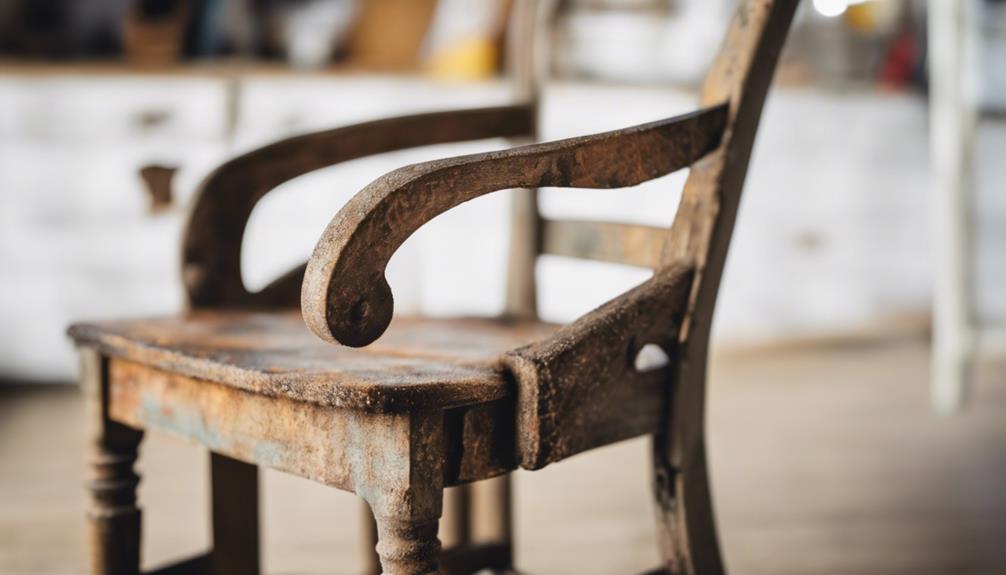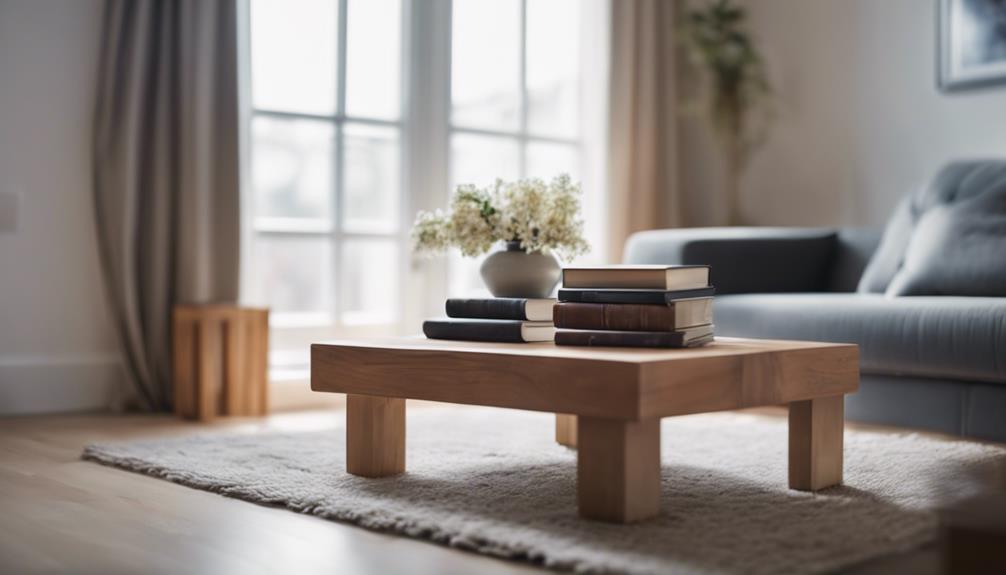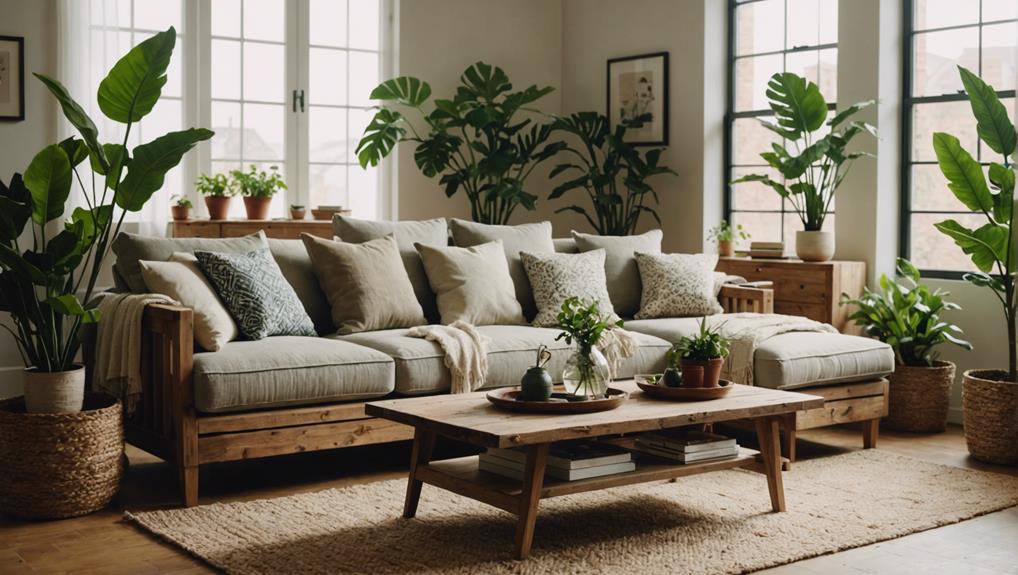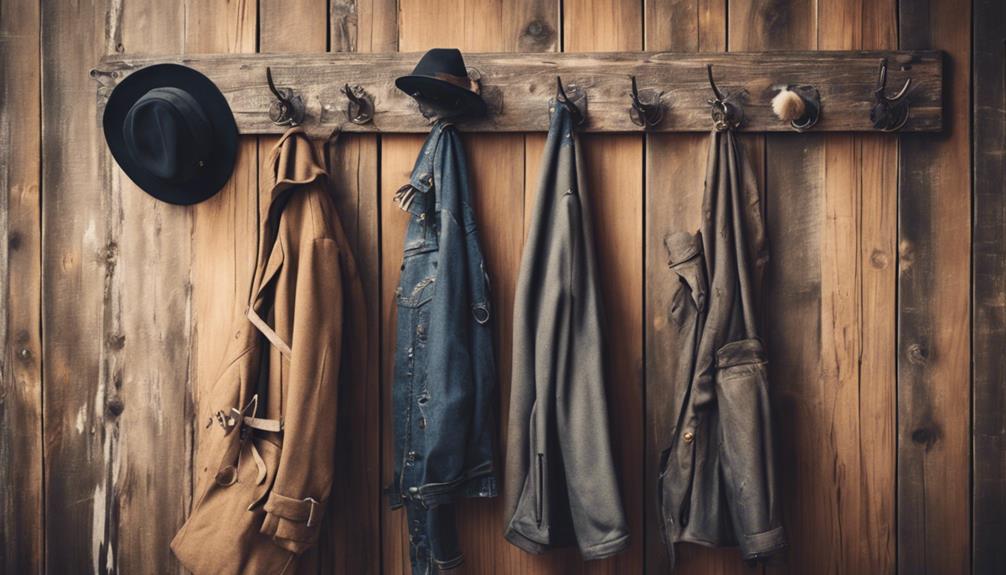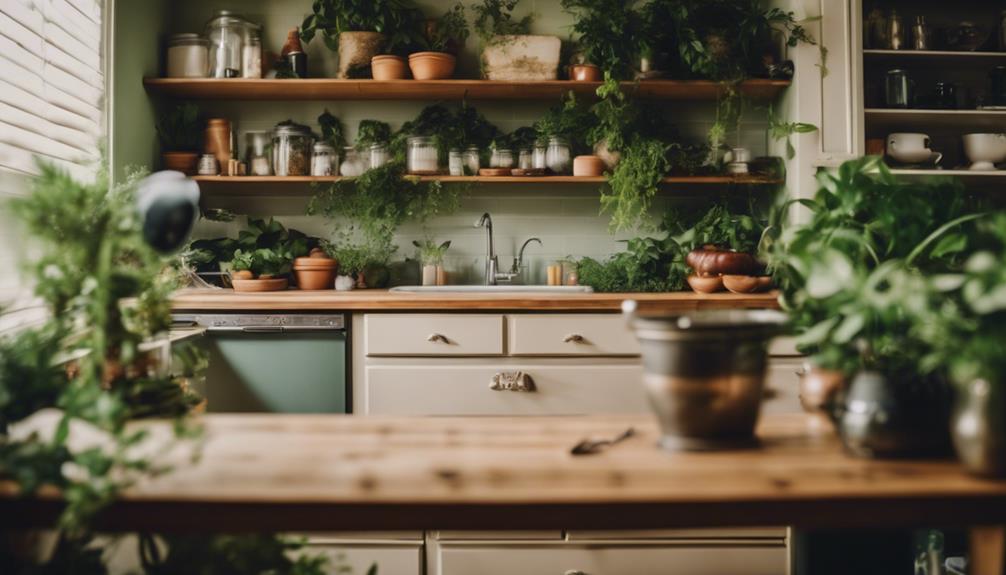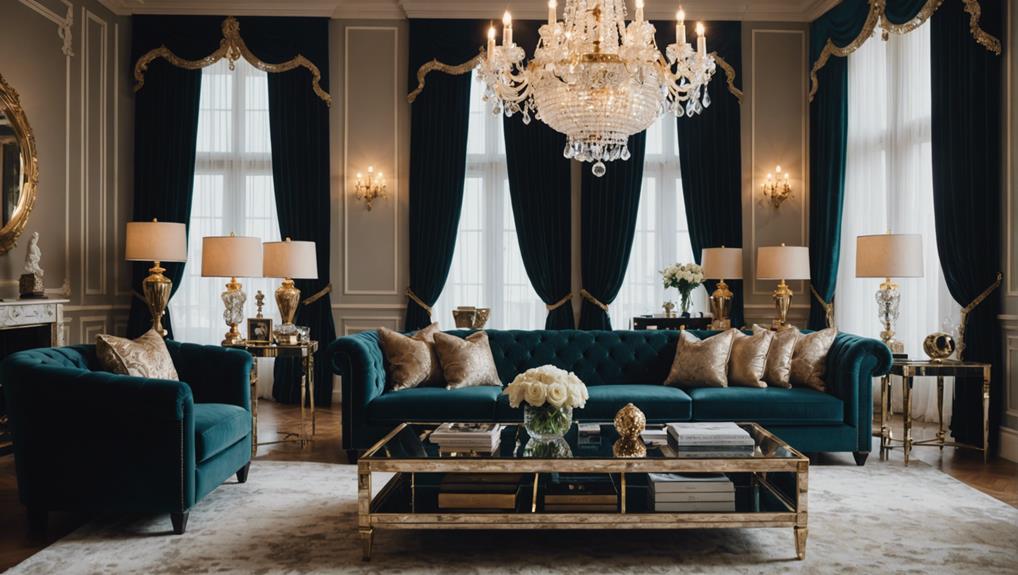We're here to revamp thrifted treasures from drab to fab in 10 simple steps. Start by selecting sturdy wood pieces with unique features and evaluating for damage. Clean with mild soap, sand lightly, and fill imperfections for a smooth canvas. Sand with the grain, choose the right primer, and test paint colors before applying. Opt for specialized techniques like dry brushing for added texture. Wait for the paint to dry, seal it for protection, and add final touches like stencils for a polished look. Get ready to witness the magic of transformation! Additional secrets await.
Key Takeaways
- Choose solid wood pieces with interesting shapes.
- Clean, sand, and fix imperfections for smooth finish.
- Prime with appropriate type for strong bond.
- Apply paint with chosen method, add texture.
- Seal with durable finish, embellish for final touch.
Selecting Thrifted Treasures to Paint
When scouting out thrift stores, we're on the hunt for solid wood furniture pieces that have the potential to shine with a fresh coat of paint. We look for items with interesting shapes or details that can be enhanced with a new color. Before making a purchase, we make sure to inspect the item carefully, taking note of any damage or repairs needed. We put one piece aside if it has holes in the center or other major flaws that can't be easily fixed.
We also consider the size and scale of the item to make certain it fits well in our space after painting. We're not afraid to think outside the box and envision how a fresh coat of paint can transform an outdated piece into a unique treasure. We're on the lookout for items that have the potential for a dramatic transformation, like outdated colors or finishes.
Cleaning and Prepping Surfaces
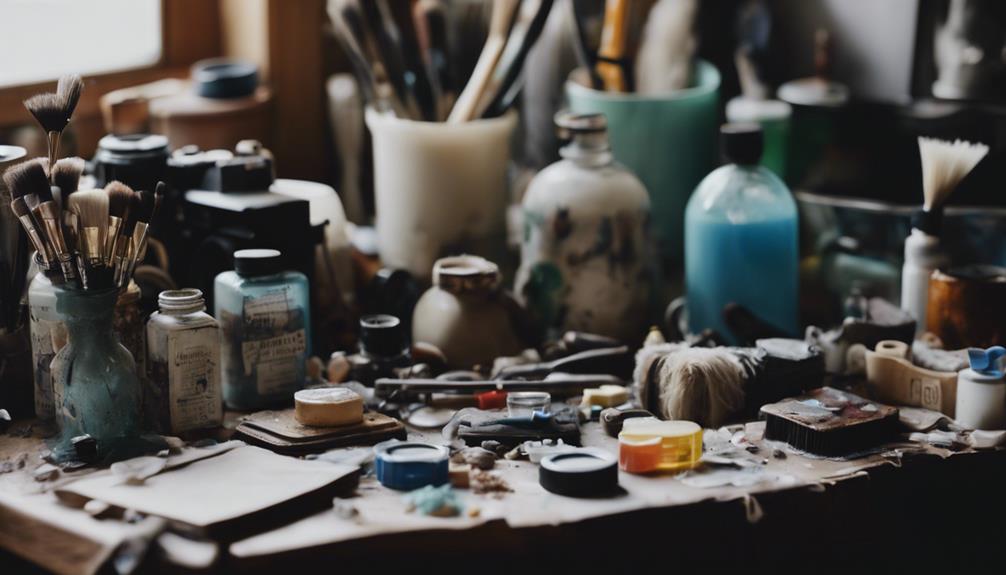
We take the time to meticulously clean and prep our thrifted treasures before applying a fresh coat of paint, recognizing that a solid foundation is essential to achieving a flawless finish. Cleaning surfaces is important to remove dirt, grime, and any previous coatings that may affect the new paint's adhesion. We use a mild soap and water solution or a degreaser to thoroughly clean the item before painting.
| Step | Action |
|---|---|
| 1 | Clean the surface with a mild soap and water solution or degreaser |
| 2 | Sand the surface lightly with fine-grit sandpaper |
| 3 | Wipe down the item with a tack cloth after sanding |
After cleaning, we lightly sand the surface with fine-grit sandpaper to create a smoother finish and improve paint adhesion. A quick wipe down with a tack cloth removes any dust particles, ensuring a clean painting surface. Properly prepping surfaces before painting has a significant impact on the final result and longevity of the paint job. By taking the time to clean and prep our thrifted treasures, we set ourselves up for a successful and long-lasting paint job.
Fixing Imperfections and Damage
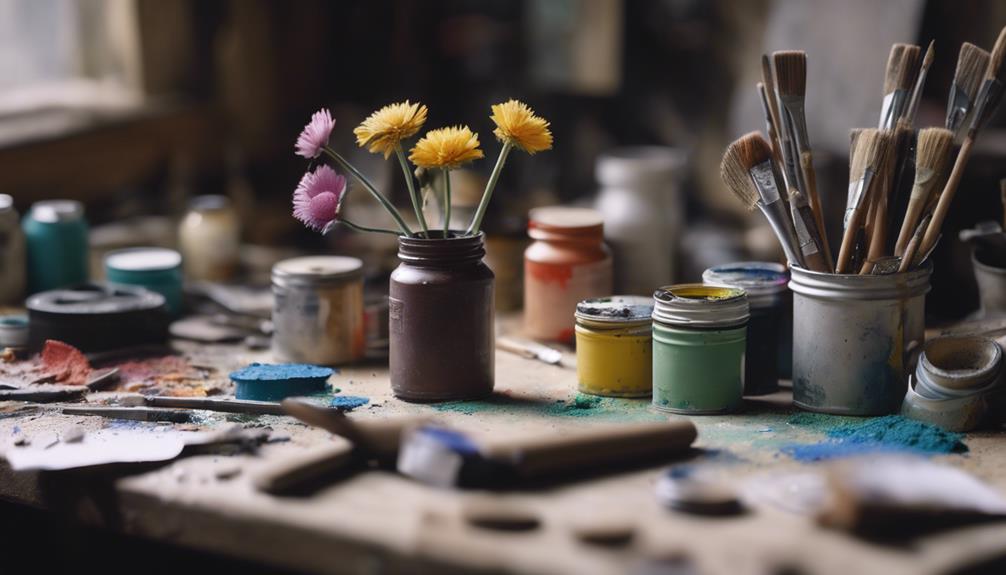
As we move forward with fixing imperfections and damage, we'll focus on tackling specific issues that can make or break the final result.
We'll start by addressing scratches, holes, and gaps – those pesky imperfections that can detract from our thrifted treasures' beauty.
Sanding Out Scratches
By gently sanding out scratches on our thrifted finds, we can uncover the hidden beauty beneath the imperfections and damage. It's a great day when we can transform a worn-out piece into a stunning treasure! With fine-grit sandpaper, we can smooth out those unsightly scratches, removing the visual noise that detracts from the item's original charm.
We'd look at our thrifted treasures with fresh eyes, imagining the possibilities. To sand effectively, we move in circular motions, avoiding noticeable patterns or lines on the surface. After sanding, a quick wipe-down with a damp cloth removes any dust or debris, leaving the surface clean and ready for the next step.
With scratches gone, our thrifted treasures are now primed for painting or refinishing, giving them a fresh, updated look that's anything but dull and lackluster – more like a dash of salt and pepper to spice up our decor! By sanding out those scratches, we're one step closer to revealing the hidden gem within.
Filling Holes and Gaps
How do we tackle those pesky holes and gaps that can make our thrifted treasures look worn and tired? We're about to find out! Filling holes and gaps is an important step in transforming our thrifted finds into fabulous pieces.
Here's what we do:
- Fill the gaps: We use wood filler, putty, or spackling compound to fill in those unwanted holes and gaps.
- Sand it smooth: We sand down the filled areas to create a smooth surface for painting.
- Prime for perfection: We apply a primer to guarantee better adhesion and coverage over the repaired areas.
- Paint it pretty: Finally, we choose a high-quality paint that matches the item's material for a seamless finish.
Sanding for a Smooth Finish
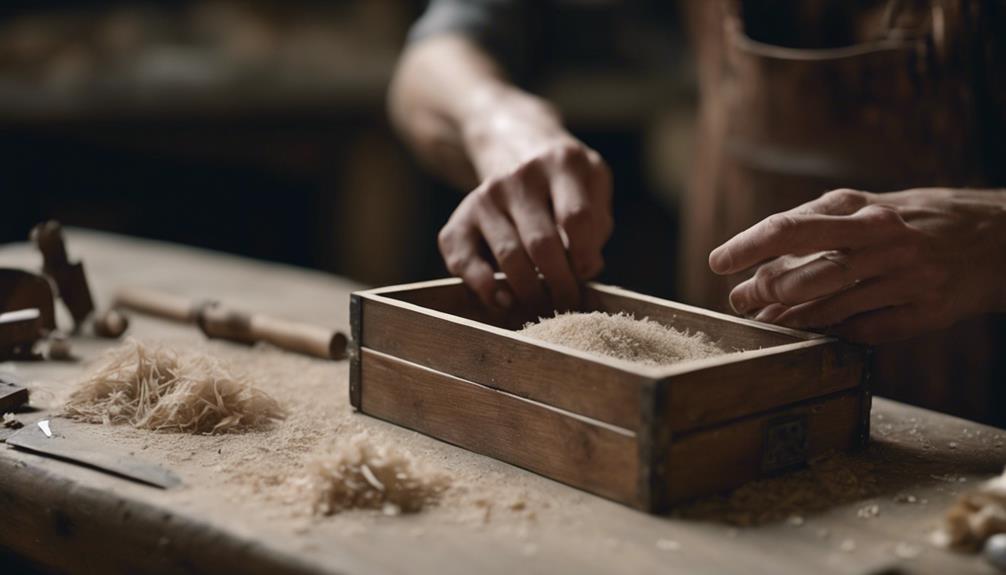
As we progress with transforming our thrifted treasures, we're now at the vital step of sanding for a smooth finish.
We'll explore the essential techniques for removing old finishes, mastering sanding methods, and smoothing out imperfections to create a flawless canvas for painting.
Removing Old Finishes
We tackle the essential task of removing old finishes, a painstaking process that demands patience and elbow grease, but yields a smooth canvas for our artistic vision. We thought I'd struggle with this step, but with the right tools and techniques, it's more manageable than we expected.
To remove old finishes effectively, we follow a few key steps:
- Choose the right grit: We use sandpaper with a grit between 80-120 for initial sanding to remove the existing finish effectively.
- Sand in the right direction: We make sure to sand in the direction of the wood grain to avoid damaging the piece and achieve a professional-looking finish.
- Gradually move to finer grits: We follow up with a finer grit sandpaper, around 220-320, to further smooth out the surface before painting.
- Be patient and persistent: We're going to put in the effort required to achieve a smooth surface, and the end result will be worth it.
Sanding Techniques Explained
What's the secret to achieving a silky smooth finish on our thrifted treasures – it all boils down to mastering the art of sanding! We're going to put in the effort to get it right, and it's worth it.
I'm just going to say it: sanding is vital in preparing our thrifted items for painting. We use sandpaper with a grit between 120-220 to create a smooth surface for the paint to stick to. We start sanding in a circular motion to remove imperfections and rough spots on the surface of the item.
After the initial sanding, we switch to a finer grit sandpaper (220-400) to achieve a finer finish and make sure the paint goes on smoothly. Remember, we're not just sanding for the sake of it – we're doing it to get that perfect finish.
I'm going to emphasize this: don't skip the final wipe-down with a damp cloth to remove any dust or debris before beginning the painting process. By following these simple steps, we'll be well on our way to a beautifully painted thrifted treasure that's sure to impress!
Smoothing Out Imperfections
Now that we've got our sanding techniques down pat, let's focus on smoothing out those imperfections that can make or break our paint job. Sanding is an essential step in preparing our thrifted items for painting, as it smooths out imperfections like rough surfaces and old finishes.
To achieve a smooth finish, we need to:
- Use fine-grit sandpaper to gently buff away any rough spots or flaking paint on the item.
- Sand in a well-ventilated area to avoid inhaling dust and debris.
- Clean the item thoroughly after sanding to remove any dust or debris before applying primer and paint.
- Repeat the sanding process as needed until the surface is smooth to the touch.
Priming for Better Adhesion
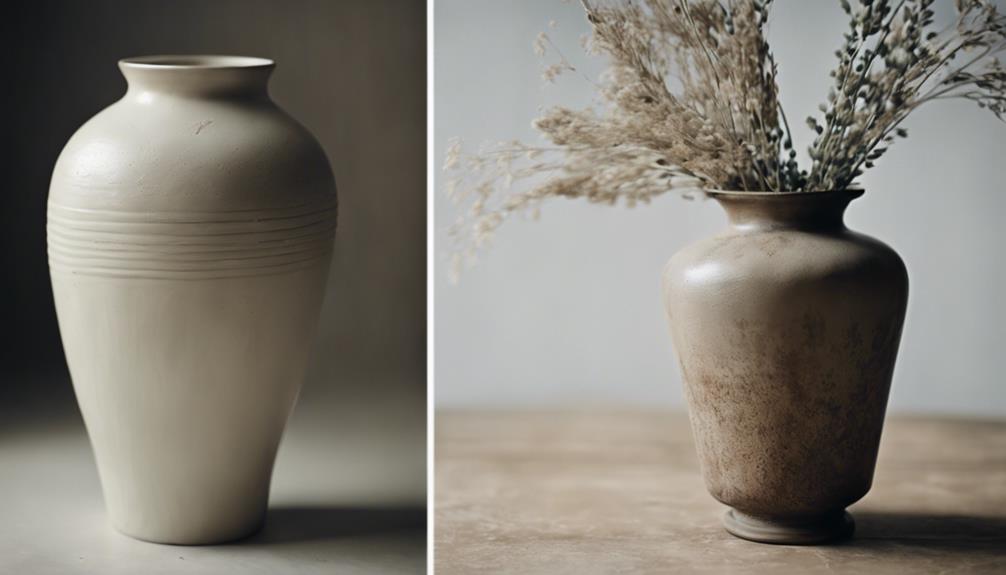
Before we delve into the world of color, an essential step in transforming our thrifted treasures is priming for better adhesion, establishing a strong bond between the paint and the surface.
We've smoothed out imperfections, and now it's time to create a solid foundation for our paint to adhere to. By applying a primer, we're securing a smooth and uniform base that allows the paint to stick better, reducing the chances of chipping or peeling over time.
With various types of primers available, such as oil-based, water-based, and shellac-based, we can choose the right one for our specific project. Proper priming not only enhances the durability of our painted finish but also ensures a longer lifespan.
We're not just slapping on some paint; we're creating a work of art that will last. By taking the time to prime our thrifted treasures, we're setting ourselves up for success and ensuring a beautiful, long-lasting finish.
Choosing the Right Paint Colors

With our thrifted treasures primed and ready, we're free to spark our creativity and choose the perfect paint colors to bring our unique visions to life. Now, it's time to unleash our inner artist and select the ideal hues to transform our finds into stunning pieces.
To guarantee our masterpieces blend seamlessly into our space, we'll consider the following essential factors when choosing paint colors:
- Existing color scheme: Guarantee our thrifted treasures complement the surrounding decor by selecting colors that harmonize with the existing palette.
- Neutral tones: Opt for timeless, versatile shades like white, black, or gray for a chic, sophisticated look.
- Bold statements: Experiment with vibrant colors to add a pop of personality to our decor.
- Test and compare: Use color swatches or paint samples to test and compare different shades before committing to the perfect hue.
Applying the First Coat of Paint
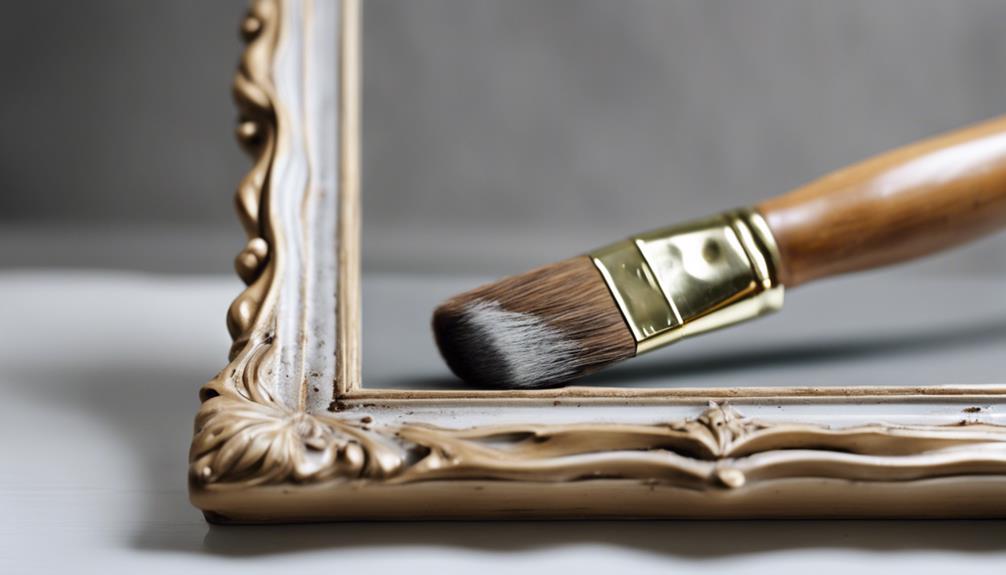
We grab our paintbrushes, ready to transform our thrifted treasures as we apply the first coat of paint, carefully guaranteeing a smooth, even layer that sets the tone for our creative vision.
Before we begin, we make sure our item is clean and dry, free of any dirt or debris that might affect the paint's adhesion. If our item is made of a material that may not take paint well, like metal or plastic, we use a primer to establish a strong bond.
Then, we choose our painting method – either a brush for a more textured look or spray paint for a smooth finish. We apply the paint evenly, working in sections to maintain consistency. It's crucial to let the first coat dry completely before adding more coats, as this helps build a durable, opaque finish.
To streamline the process, we can opt for a paint with a built-in primer, saving us time and effort. With our first coat applied, we're one step closer to revealing our thrifted treasure's hidden beauty.
Adding Additional Coats and Texture
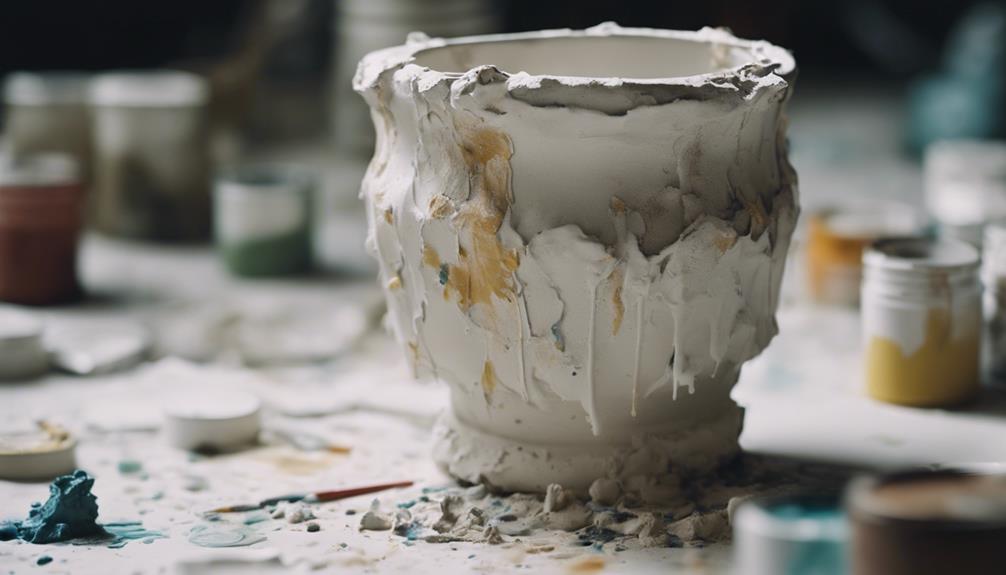
Now that we've achieved a smooth, even base coat, it's time to build on that foundation by adding additional coats of paint to really make our thrifted treasures pop with color and texture.
To take our pieces to the next level, we can experiment with different painting techniques and tools. Here are some ways to add texture and interest:
- Dry brushing: Use an almost-dry brush to create a rough, textured look.
- Stippling: Create a pattern of small dots to add depth and visual interest.
- Multi-color magic: Use multiple colors or shades to create a layered, interesting look.
- Toolbox treasures: Experiment with different tools like sponges, stencils, or even household items to create unique textures and patterns.
Remember to let each coat dry completely before applying the next layer to prevent smudging or mixing of colors.
Sealing With a Protective Finish

As we near the finish line in transforming our thrifted treasures, we're taking an essential step in ensuring their beauty lasts – sealing them with a protective finish.
We'll explore the different types of finishes available, from clear coat sprays to waxes and varnishes, and discuss how to choose the right one for our unique pieces.
Finishing Touches Applied
With our paint fully dry, we apply a protective finish to seal in our hard work and guarantee our thrifted treasure remains vibrant and chip-resistant for years to come. This important step ensures our masterpiece stays looking fabulous, even with regular use.
To achieve a flawless finish, we follow these essential steps:
- Wait for the paint to dry completely: Avoid applying the protective finish too soon, as it can cause smudges and imperfections.
- Choose the right finish: Select from varnish, polyurethane, or wax, depending on the desired look and level of protection.
- Use a high-quality applicator: A good brush or applicator ensures a smooth, even application.
- Follow the manufacturer's drying instructions: Allow the protective finish to dry and cure according to the instructions to ensure a strong, long-lasting bond.
Protective Coatings Explained
We explore the world of protective coatings, examining the various options available to seal our thrifted treasures and guarantee their painted beauty lasts for years to come. When it comes to protecting our painted masterpieces, we have several options to choose from.
| Coating Type | Characteristics | Best For |
|---|---|---|
| Polyurethane | Durable, waterproof | High-traffic items, furniture |
| Varnish | Glossy, protective | Wood surfaces, decorative items |
| Lacquer | Fast-drying, protective | Quick projects, small items |
| Wax | Natural, subtle sheen | Distressed, vintage finishes |
| Shellac | Natural, high-gloss | Fine furniture, antiques |
Sealant Options Compared
We've explored the importance of protective coatings, and now it's time to explore the diverse range of sealant options available to finalize our painted thrifted treasures. With so many choices, it can be overwhelming, but don't fret, we've you protected!
Here are some popular sealant options to ponder:
- Acrylic sealants: Provide a clear, glossy finish that safeguards painted surfaces from moisture and UV rays.
- Polyurethane sealants: Offer a durable, water-resistant coating suitable for high-traffic areas or outdoor use.
- Mod Podge sealants: Are versatile and can be used for both sealing and decoupaging, providing a smooth, matte finish.
- Spray sealants: Like clear enamel or varnish, offer quick and easy application for a protective coat on painted items.
When choosing a sealant, contemplate the desired finish, level of protection needed, and the type of surface being sealed.
Adding Final Embellishments
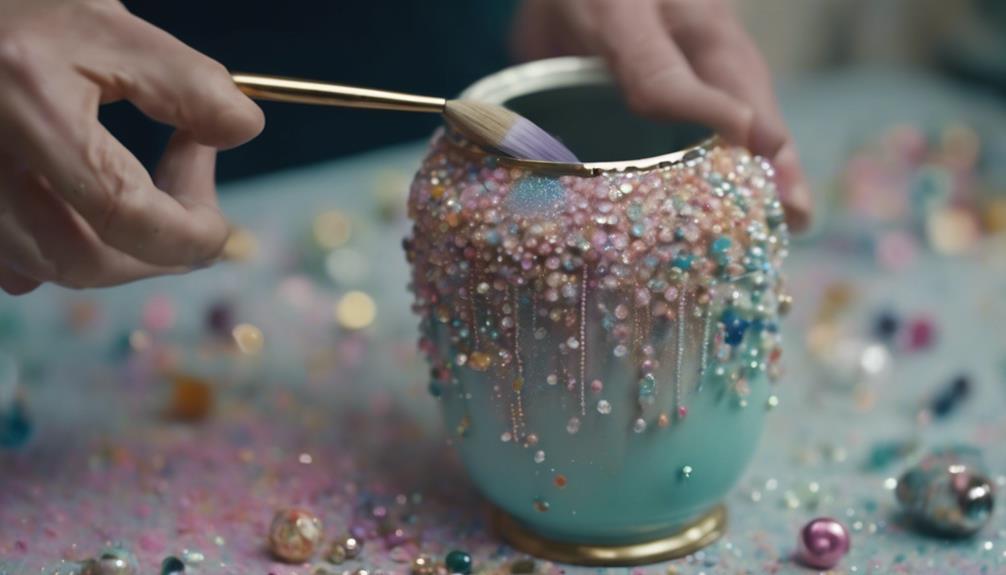
As we put the finishing touches on our thrifted treasure, a few carefully chosen embellishments can elevate our painted masterpiece from ordinary to extraordinary.
We can add a touch of elegance with ribbon, lace, or twine, or go for glamour with metallic or glitter paint.
For a more personalized look, we can attach small embellishments like beads, sequins, or charms to make our piece truly unique.
If we want to add intricate designs or patterns, stencils or decals are a great option.
Frequently Asked Questions
Can I Use Regular Household Cleaners to Prep My Thrifted Find?
We can't emphasize this enough: avoid using regular household cleaners to prep your thrifted find! They can leave residues that interfere with paint adhesion or even damage the surface.
Instead, we opt for gentle cleaners specifically designed for cleaning surfaces before painting. These products guarantee a clean slate for our paint to adhere to, resulting in a flawless finish.
Trust us, it's worth the extra effort to get it right!
How Do I Prevent Paint From Chipping off After It Dries?
We've all been there – you spend hours perfecting your paint job, only to have it chip off shortly after.
To guarantee this, we make sure to properly prep our surface, using a primer if necessary. Then, we apply a coat of varnish or sealant to protect the paint and create a barrier against wear and tear.
This extra step secures our hard work doesn't chip away, and our thrifted find stays fabulous for longer.
Are There Any Eco-Friendly or Low-Voc Paint Options Available?
We're happy to report that yes, there are eco-friendly and low-VOC (volatile organic compound) paint options available. Many brands now offer environmentally responsible choices that minimize indoor air pollution and reduce environmental impact.
Look for labels like Greenguard Gold or California Air Resources Board (CARB) compliant, which guarantee the paint meets strict standards for low chemical emissions.
Can I Mix Different Brands of Paint for a Unique Color?
We've wondered if we can mix different brands of paint to create a one-of-a-kind color. The answer is yes, but with caution. Since different brands may have varying formulations, it's essential to test the mixture on a small, inconspicuous area first.
If the paint combines smoothly and dries evenly, you're good to go! However, if it separates or forms lumps, it's best to stick with a single brand for a consistent finish.
Will a Topcoat Protect My Artwork From Fading in Sunlight?
It's understandable that one might assume a topcoat is a foolproof solution to fading, but it's not that simple. The reality is, a topcoat can help protect our artwork from sunlight, but it's not a guarantee.
UV rays can still cause colors to fade over time, even with a topcoat. That being said, a good topcoat can definitely provide some protection. Look for one that specifically states it offers UV protection and follows the manufacturer's instructions for application.
Conclusion
To sum up, painting thrifted treasures can transform them from drab to fab with just a few simple steps.
Did you know that up to 95% of thrifted items can be repurposed with a fresh coat of paint?
By following these 10 steps, you can breathe new life into your thrifted finds and create unique pieces for your home.
So next time you're browsing at the thrift store, keep in mind the potential for a DIY paint makeover!
